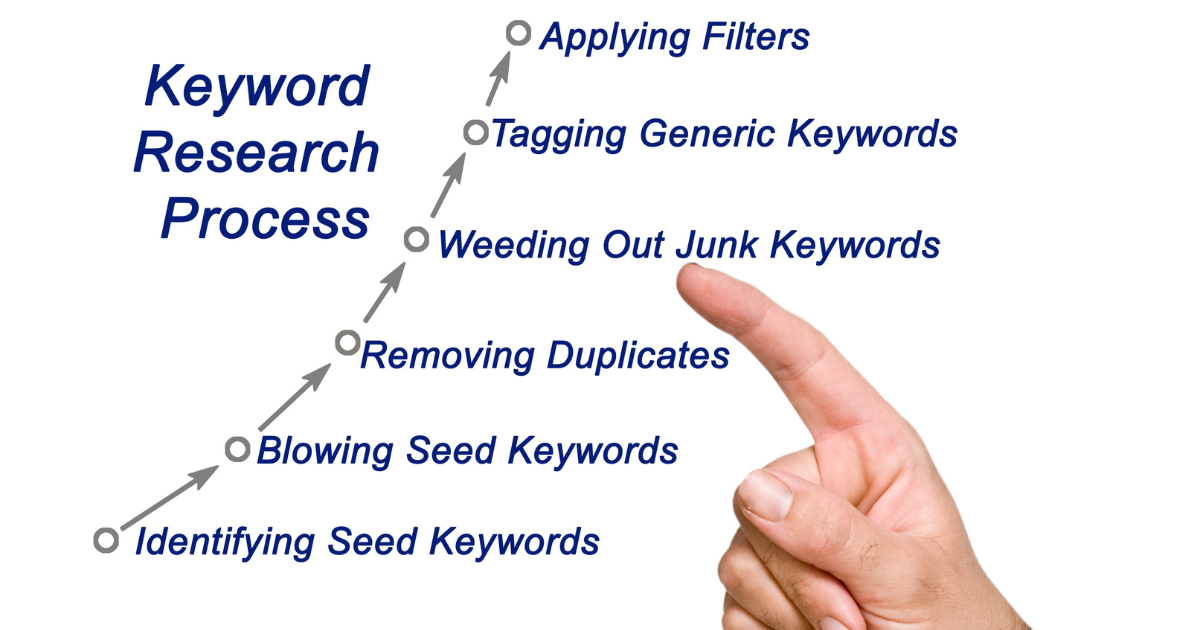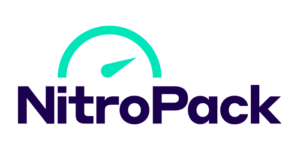In the online space, where every online store is vying for attention, mastering SEO is not just a choice but a necessity for eCommerce entrepreneurs.
Let me share a little secret: when I first dipped my toes into the enormous ocean of eCommerce, I thought having great products was enough.
Oh, how naive I was! It didn’t take long for me to realize that without a solid eCommerce SEO strategy, my store was like a hidden treasure chest in the middle of an uncharted island – valuable but invisible.
Diving into search engine optimization can feel like decoding a cryptic puzzle, especially when trying to cater to the ever-evolving algorithms of search engines. But fear not! My journey, peppered with trials, errors, and triumphs, has equipped me with insights that I’m eager to share.
These aren’t just SEO tips for eCommerce entrepreneurs; they’re the golden rules I wish I had known from day one. So, get set as we embark on this journey to change your online store into an SEO powerhouse.
Search Engine Optimization and Its Importance for E-commerce
Search Engine Optimization is similar to the compass that directs ships through the treacherous waters of the digital marketplace. It’s the art and science of tweaking your eCommerce site to speak the language of search engines, ensuring your products don’t just exist online but thrive and catch the eye of potential customers.
In the simplest terms, eCommerce SEO involves raising your site and its content so that search engines can easily find, index, and rank it.
This means when someone types in a search query related to your products, your eCommerce website pops up like a beacon in the vast sea of the internet. But, as with everything in the digital world, SEO is not static; it’s a creature that evolves.
In the early days of eCommerce, SEO was like the Wild West – uncharted and lawless. A few keywords were stuffed here, and there were enough to get noticed. However, as search engines have become more sophisticated, the landscape of SEO strategy has undergone a seismic shift. Now, it’s not just about keywords; it’s about the relevance, usability, and quality of your website.
This evolution means that an eCommerce site cannot just rely on traditional methods. It needs to understand the user’s intent, provide important content, and offer a seamless user experience.
The algorithms of search engines have grown smarter, striving to mimic how humans think and search. Therefore, an effective strategy must be dynamic and user-focused.
In essence, mastering SEO for your eCommerce website is not just about playing by the rules of search engines. It’s about understanding the nuances of digital consumer behavior, staying ahead of technological advancements, and continuously adapting your strategies.
It’s a journey of aligning your eCommerce site with the ever-evolving digital ecosystem to ensure not just visibility but relevance and user satisfaction.
As we explore further, let’s unravel the specific strategies and tactics that can transform your eCommerce website into a search engine darling.
10 SEO Tips & Strategies For Ecommerce Entrepreneurs
In the dynamic world of ecommerce, staying ahead requires smart, effective SEO strategies. For entrepreneurs looking to boost their online presence and sales, these tailored SEO tips and techniques are essential.
Explore this curated list to elevate your ecommerce venture in the digital marketplace.
1. Doing Keyword Research: The Foundation of search engines

At the heart of eCommerce SEO lies a crucial element: keyword research. It’s the groundwork upon which the towering structure of search engine optimization is built. Think of your eCommerce site as a vast library.
Without a catalog system, how would anyone find the book they need? Similarly, keyword research helps categorize and present your products in a way that search engines, and consequently, your customers, can easily find them.
Keyword research is not just about looking for the most popular words or phrases in your niche. It’s a strategic process to understand the language your possible customers use when they’re on the hunt for products you offer.
This involves delving into their search habits, preferences, and even their pain points. For an eCommerce website, this is like decoding a secret language that directly connects you to your audience.
The process begins with tools like Google’s Keyword Planner, SEMrush, or Ahrefs, which provide insights into search volumes, competition levels, and trends. But here’s a tip that often goes unnoticed: avoid the trap of duplicate content.
Just because a keyword is popular doesn’t mean it should be replicated verbatim across your eCommerce store. Unique, engaging, and relevant content around those keywords is what will set your site apart.
Let’s take a real-life example. Imagine an eCommerce store specializing in eco-friendly household products. Through diligent keyword research, they discover that their audience frequently searches for sustainable cleaning products.
Instead of just sprinkling this phrase across their website, they create informative blog posts, product descriptions, and even tutorials centered around this term. This approach not only boosts their SEO but also establishes their authority and credibility in the niche.
Effective keyword research is a balancing act. It’s about finding what resonates with your audience and what aligns with your brand’s offerings. Remember, the most powerful keywords are those that bridge the gap between your ecommerce site content and the needs of your target audience.
By mastering this, you lay a solid foundation for your SEO strategy, paving the way for increased visibility, traffic, and, ultimately, conversions. In the following sections, we’ll dive deeper into how you can leverage these keywords to turn your eCommerce website into a magnet for both search engines and customers.
2. Optimizing Product Pages for Maximum Visibility In eCommerce SEO Strategy

When it comes to the bustling world of online shopping, the optimization of product pages on your eCommerce site is not just a recommendation; it’s essential.
Think of each product page as a miniature storefront, beckoning potential customers from the vast digital high street that is search results. Your goal? To make each of these storefronts as inviting and visible as possible.
Let’s walk through a step-by-step guide on how to achieve this.
Firstly, the title of your product is like the headline of an article – it needs to be clear, compelling, and SEO-friendly. This means incorporating relevant keywords but also ensuring they accurately represent the product. No one likes clickbait, especially in eCommerce SEO.
Next, we dive into the product descriptions. This is where you can truly showcase your item, not just through specifications but by telling a story that resonates with your audience.
Avoid duplicate content across your web pages; unique and engaging descriptions not only help with SEO but also enhance user experience. Here, you can also sprinkle in some long-tail keyword ideas, which are more specific and less competitive, thus more likely to attract a targeted audience.
Images play a pivotal role, too. High-quality, clear images not only make the page visually appealing but also help in SEO when tagged with relevant keywords. Remember, your images should load quickly to enhance user experience.
Now, let me share a personal experience. Once, while optimizing a product page for a vintage watch on my eCommerce website, I focused on creating a unique, narrative-driven description, used high-quality images, and optimized the title with targeted keywords.
The result? The page not only ranked higher in search results but also saw a significant increase in conversions. This was a testament to the power of a well-optimized product page.
In essence, optimizing your product pages is a blend of art and science. It’s about understanding the technical aspects of eCommerce SEO tips and combining them with the creativity of marketing.
Your product pages are more than just digital shelves for your items; they are the bridge connecting your products to the needs and desires of your customers.
Done right, they can transform casual browsers into loyal customers. As we move forward, we’ll explore more ways to maximize the visibility and appeal of your eCommerce site’s product pages.
3. Engage the Power of Mobile Optimization In eCommerce SEO

In today’s fast-paced digital era, the power of mobile optimization for eCommerce SEO cannot be overstated. It’s not just a trend; it’s a seismic shift in how consumers interact with online stores.
With smartphones becoming everywhere, the rise of mobile commerce has fundamentally transformed the shopping experience. Now, more than ever, ensuring your eCommerce site is mobile-friendly is not just a good practice; it’s a critical component of your eCommerce strategy.
Creating a mobile-optimized website goes beyond making it accessible on a phone. It’s about delivering a seamless, user-friendly experience that aligns with the habits and preferences of mobile users. This starts with the site structure.
A well-structured, mobile-responsive website ensures that everything from your category pages to your product descriptions looks and functions perfectly on smaller screens.
Then, there’s the aspect of page speed. Mobile users are typically on the go, which means they have even less patience for slow-loading pages. Optimizing images, leveraging browser caching, and minimizing code can significantly enhance loading times, keeping your mobile audience engaged.
Content-wise, avoid the pitfall of duplicate content across mobile and desktop versions. While the core information should be consistent, the presentation can be tailored for mobile users.
For instance, incorporating long-tail keywords into mobile-friendly versions can be a game-changer. These specific phrases not only improve your chances in search results but also cater to the more focused search queries of mobile users.
Let me share a quick anecdote to illustrate the impact of mobile optimization. A friend running an online boutique decided to revamp her website for mobile users, focusing on a responsive design and faster load times.
The result? She witnessed a remarkable 40% increase in mobile traffic and a significant boost in sales. This clearly showed how optimizing for mobile can unlock a wealth of opportunities in the realm of eCommerce SEO.
In conclusion, mobile optimization is not just about adapting to a new platform; it’s about embracing and leveraging the changing shopping behaviors of your customers.
By focusing on aspects like site structure, page speed, and mobile specifically for eCommerce SEO, you can ensure that your online store isn’t just surviving but thriving in the organic search world.
4. Invest in Site Speed: Keep Your Audience Engaged

In the digital realm of eCommerce, where every second counts, the speed of your site can be the frail line between success and failure. Imagine a potential customer clicks on your site, excited to explore your products, but then… they wait.
And wait. If your pages load as slowly as a snail on a leisurely stroll, you can bid farewell to not just your customer but also your ranking in search results. This is where the undeniable impact of site speed on both user experience and eCommerce SEO comes into play.
Site speed is a vital factor for eCommerce SEO for eCommerce, influencing everything from user satisfaction to site rankings. Search engines, like Google, rank websites that load quickly, as they offer a better experience for users.
This means if your site is slow, it might get lost in the depths of search engine results, no matter how relevant your long tail or commercial keywords are.
So, how do we combat this speed bump? First, analyze your site’s current performance using tools like Google’s PageSpeed Insights. This will give you a clear picture of where you stand and what needs improvement.
Next, optimize your site structure.
A cluttered, heavy site slows down loading times. Streamline your design, compress images, and minimize the use of large, complex files.
Another key strategy is to optimize your server response time. Choose a trustworthy hosting provider and consider a content delivery network (CDN) to distribute the load. Also, look into caching solutions to store frequently accessed data, thus reducing load time for your category pages and other key sections of your site.
Let’s talk about a real-world success story. An online bookstore struggling with sluggish load times implemented these strategies – optimizing images, streamlining code, and switching to a better hosting service. The result was astonishing.
Their site speed improved dramatically, leading to a 30% increase in page views and a noticeable boost in sales. This is a testament to the fact that investing in site speed is not just a technical necessity but a business strategy.
In essence, optimizing site speed is a multi-faceted approach, requiring attention to detail and a thorough understanding of the nuts and bolts of your eCommerce platform.
It’s about ensuring your website isn’t just a repository of products but a fast, efficient, and user-friendly platform that supplies the needs of today’s fast-paced consumers.
5. Create Engaging and Relevant Content

When talking eCommerce SEO tips, content is not just king; it’s the whole kingdom.
The role of content in SEO is pivotal, as it’s the vehicle that carries your brand’s voice, engages your audience, and, most importantly, appeases the almighty search engines.
High-quality, SEO-friendly content can elevate your site’s visibility in search results, turning mere visitors into loyal customers.
But what makes content ‘SEO-friendly’?
It starts with a deep understanding of keyword ideas and integrating them seamlessly into your content. This doesn’t mean stuffing keywords into every sentence.
Instead, it’s about creating a natural flow of language that resonates with your audience and search engines alike. Focus on long-tail keywords that are restricted to your niche. These are less competitive and more targeted, increasing your chances of positioning higher in search engine results pages (SERPs).
Next, consider the structure of your site and how content fits into this framework. Each piece of content, be it on category pages or blog posts, should be purposeful and add value. This is where internal links come into play, creating a web of content that is easily navigable and interlinked, providing a richer experience for users and search engines.
A success story in this realm is a boutique clothing store that shifted its focus to storytelling through its content strategy. They began crafting detailed blog posts about fashion trends, style guides, and the stories behind their collections, integrating relevant keywords and internal links.
This approach not only increased their visibility on SERPs but also established them as a go-to resource for fashion enthusiasts. The result was a major boost in organic traffic and an increase in conversion rates.
Crafting high-quality, engaging content is a blend of art and science. It requires a balance between being informative, persuasive, and SEO-savvy. This isn’t just about pleasing algorithms; it’s about creating a connection with your audience, providing them with value, and enhancing their journey through your eCommerce site.
6. Leverage Social Media for SEO

In today’s interconnected digital landscape, leveraging social media for SEO is not just an option but a strategic imperative for any eCommerce business. The integration of social media into your strategy can amplify your online presence, creating a synergy that boosts both organic search visibility and customer engagement.
While social media doesn’t directly contribute to search engine rankings, its influence in driving organic traffic and enhancing brand recognition is undeniable.
Firstly, let’s talk about how social media can complement your SEO efforts. Each social platform is a potential goldmine for driving traffic to your result pages and increasing your site’s exposure.
When your content resonates with your audience on social media, it leads to increased shares, likes, and comments. This engagement not only broadens your reach but also drives more organic traffic to your eCommerce site, indirectly boosting your standing in search engine results.
A practical tip is to use tools like Google Keyword Planner to identify trending keywords and incorporate them into your social media content. This alignment ensures that your social media posts are not only engaging but also SEO-friendly.
Additionally, consistently linking back to your product pages or blog posts from your social media channels can create a network of backlinks, further enhancing your site’s authority.
A few years ago, I managed social media for a boutique fashion eCommerce site. We focused on creating visually appealing posts that showcased our products in real-life settings, using keywords and hashtags strategically.
We also engaged with our followers actively, creating a community around our brand. This approach led to a significant increase in followers and, more importantly, a surge in traffic to our website, with a noticeable improvement in our search engine rankings.
This experience was a clear testament to the power of social media in leading organic traffic and enhancing SEO.
For these eCommerce SEO tips, social media for SEO is about crafting a narrative that resonates with your audience and using these platforms as conduits to your eCommerce sites.
It’s about building relationships, understanding your audience’s preferences, and creating content that appeals to both human users and search algorithms.
7. Enhance SEO with User Experience (UX)

The intricate dance between User Experience (UX) and SEO is one that can’t be overlooked in the realm of e-commerce sites.
Enhancing SEO with UX is like preparing a gourmet meal; every ingredient must be chosen and prepared with care to create a delightful experience. Google’s ever-evolving algorithms now prioritize user experience, making it an integral part of your eCommerce SEO strategy.
An accessible website is not just about aesthetics; it’s about creating an intuitive, seamless journey for your visitors. This journey begins the moment they land on your site and continues through navigation, interaction, and, eventually, conversion.
To enhance UX, start by using tools like Google Keyword Planner and Google Search Console.
These SEO tools offer invaluable awareness of what your audience is looking for, allowing you to tailor your site’s content and navigation accordingly.
Another key aspect of UX is site speed and mobile responsiveness. Today’s users expect quick, accessible information, regardless of the device they’re using. Ensuring your eCommerce site loads quickly and is easily navigable on all devices is crucial.
This not only improves user experience but also shows the search engine that your website is valuable, thereby improving your SEO rankings.
Let me share a compelling case study.
I worked with an eCommerce site that struggled with high bounce rates and low conversions.
Upon analysis, we realized the site was not optimized for mobile users, and the navigation was cumbersome. We revamped the website, focusing on mobile responsiveness and streamlining the user journey.
Within months, the site saw a significant decrease in bounce rates and a significant increase in conversions. This success story highlights how enhancing UX can lead directly to improved SEO results.
Creating a user-friendly website also involves paying attention to other aspects like internal linking, which helps users navigate your site and see more content.
Clear, descriptive headings and easy-to-read content formatted with SEO tips for eCommerce entrepreneurs in mind further enhance UX. Remember, your website should cater to user needs and preferences, making their journey as effortless and enjoyable as possible.
The connection between UX and SEO is undeniable. A well-designed, user-centric website is more likely to rank higher in search engine outcomes, attract more visitors, and convert these visits into sales.
8. Build Backlinks: A Vital SEO Strategy

Building backlinks in the vast universe of SEO is similar to forging alliances in a grand strategy game for ecommerce sites.
Each quality backlink from a reputable site is a vote of certainty in the eyes of search engines, like a nod of approval from the digital community.
This is why backlinks are a cornerstone of SEO, especially for eCommerce sites where competition for visibility is fierce.
The journey to acquiring quality backlinks starts with understanding their importance. Backlinks not only push traffic to your site but also enhance your site’s authority and credibility. This, in turn, can notably boost your rankings in search engine results.
It is important to focus on quality over quantity. A few backlinks from well-respected, relevant sites are far more valuable than numerous links from lesser-known, unrelated sources.
So, how do you gain these coveted backlinks? It begins with creating top-notch, shareable content. This could be informative blog posts, insightful industry analyses, or innovative product showcases.
Utilizing SEO tools like Google Search Console and conducting thorough eCommerce keyword research can guide your content creation, ensuring it is in line with your target audience and includes relevant target keywords.
Another effective strategy is guest posting on other websites. This entails writing content for other blogs or websites in your niche, which allows you to place a link back to your site, ideally on a relevant category page or a piece with significant internal linking. It’s a win-win: the host site gets quality content, and you get a backlink.
Let’s consider a success story to illustrate this. An online artisanal coffee shop leveraged this strategy by writing guest posts for popular food and beverage blogs.
They focused on topics like ethical sourcing and brewing the perfect cup, incorporating internal links back to their category pages. This not only brought in direct traffic but also significantly improved their search engine rankings.
Utilizing tools like Google Analytics, they saw a notable increase in search engine performance, which was directly attributed to these new, high-quality backlinks.
In essence, building backlinks is an exercise in establishing and nurturing relationships within the digital landscape. It’s about connecting with other websites, providing value through your content, and strategically placing your eCommerce site within a network of relevant, authoritative sources, among other search engines.
9. Pay Attention To Your Meta Descriptions and Title Tags: Your First SEO Impression

In the world of SEO strategies, Meta Descriptions, and Title Tags serve as the intricate embroidery that first catches the eye.
Often considered the first SEO impression, these elements play a pivotal role in how your web pages are perceived both by users and search engines.
While they don’t directly influence your ranking, they are essential in driving click-through rates from Google search results, acting as an invitation to potential visitors.
Title Tags are the bold headings that appear in search engine listings. They should be succinct yet compelling, effectively encapsulating the essence of your page’s content. Each title tag should include your target keyword, reflecting the core theme of your page. It’s a balancing act of being descriptive, relevant, and engaging, all within a 50-60-character limit.
Meta Descriptions, on the other hand, are the brief previews found under the title tags in search results. Think of them as the synopsis of a novel, enticing readers to delve into the pages.
These descriptions should be informative and include informational keywords that align with the searcher’s intent. They should also be concise, ideally between 150-160 characters, and provide a clear, compelling reason for why someone should click on your link.
A common mistake to avoid in meta descriptions and title tags is broken links and irrelevant content. Ensure that each meta description and title tag perfectly reflects the content of the page it represents. This not only improves user experience but also builds trust with your audience.
Let’s consider an anecdote to underline their importance. A local bakery revamped its website, paying special attention to it and title tags, ensuring they were enticing and keyword-rich.
They also conducted a thorough link-building campaign to ensure all internal linking was optimized. The result was a significant increase in organic traffic, with Google Analytics showing improved engagement metrics.
This was a clear indicator of how these elements, though small, can have a substantial impact on drawing traffic and enhancing on-page optimization.
In essence, Meta Descriptions and Title Tags are more than just SEO elements; they are the opening lines of your digital story. They set the stage for what users can expect when they go through to your site.
10. Monitor and Adapt Your SEO Strategy

Navigating the ever-evolving landscape of SEO is like embarking on a dynamic voyage, where constant monitoring and adaptation are key to staying on course.
This is particularly true when it comes to the crucial aspect of building and maintaining backlinks, an integral part of any healthy SEO strategy. The process of acquiring quality backlinks is not a one-time task but an ongoing endeavor that requires vigilance, analysis, and strategic adjustments.
At the core of this process is the understanding that backlinks are a vote of confidence from other websites, signaling to search engines like Google that your content is valuable and useful.
However, not all backlinks are created equal. It’s essential to aim for links from reputable sources that are relevant to your niche, as these carry more weight in Google search results.
This is where informational keywords come into play, guiding you to create content that not only resonates with your audience but also attracts attention from authoritative websites.
To ensure your backlinking efforts are effective, it’s crucial to use keyword research tools and conduct site audits regularly. These tools help identify broken links, assess the quality of your backlinks, and provide insights into how you can improve your link-building strategy.
A regular site audit also helps you keep track of your web page’s health, ensuring that all links are functioning correctly and contributing positively to your SEO.
One success story that comes to mind involves a small e-commerce business specializing in artisanal products. By using a keyword tool to identify relevant informational keywords and focusing their content around these terms, they were able to attract high-quality backlinks from prominent blogs and industry sites.
This not only improved their position in Google search results but also significantly increased their organic traffic. Their approach exemplifies how a well-monitored and adapted link-building strategy can yield tangible benefits.
In summary, monitoring and adapting your SEO strategy, especially in the realm of backlinking, is not just beneficial – it’s essential. By staying adjusted to the changing dynamics of SEO, utilizing the right tools, and being willing to make necessary adjustments, you can ensure that your backlinking efforts support and enhance your overall online presence.
Wrapping Up: SEO Tips for Ecommerce Entrepreneurs

As we wrap up, it’s clear that the journey of SEO in eCommerce is ongoing and dynamic. From refining your site structure to ensuring no broken links, each aspect we’ve explored is a vital piece of the puzzle.
Remember, SEO is not just a strategy; it’s an art that requires patience, persistence, and adaptability. Whether you’re just starting out or looking to enhance your existing ecommerce site, these SEO tips for ecommerce entrepreneurs are your roadmap to success in the web page world.
So, take these insights, apply them to your online store, and watch as your digital presence grows. Now is the time to embark on this transformative SEO journey!





















